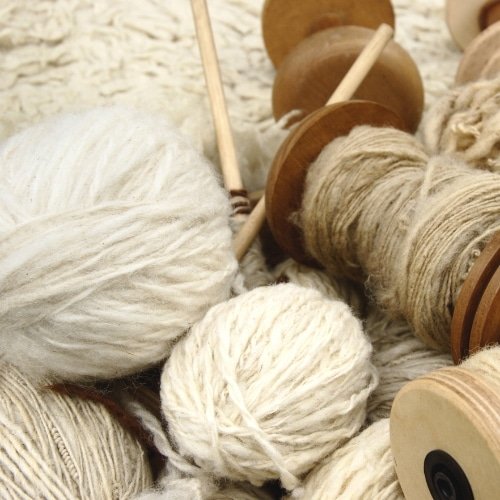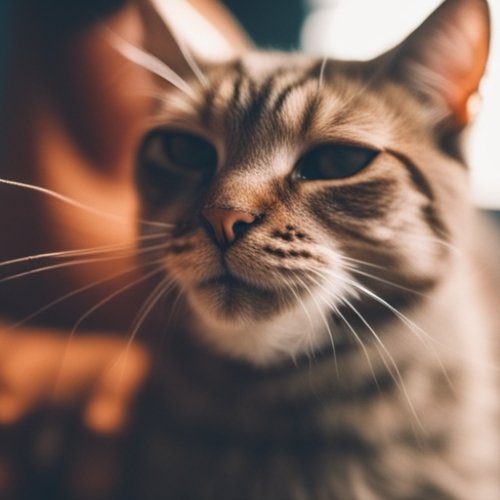The Ultimate Guide to Understanding Your Cat’s Relationship with Wool
Have you ever wondered why your cat seems to have a fascination with wool? Perhaps you’ve noticed that they enjoy snuggling up in wool blankets or kneading wool sweaters. In this comprehensive guide, we’ll explore the relationship between cats and wool, including its benefits, risks, and alternatives.

Do Cats Like Wool?
Yes, cats do like wool! The texture of wool is similar to that of a cat’s mother’s fur, which can be comforting and soothing for them. Cats also enjoy kneading and pawing at soft materials, and wool provides a satisfying sensation for them to do so. Additionally, the scent of wool can be a source of comfort and familiarity for cats, especial
Do Cats Like Wool?
- Cats are attracted to wool because of its texture, scent, and warmth.
- Wool can be beneficial for cats, providing comfort, warmth, and stress relief.
- However, wool can also pose risks to cats, including shedding and allergies.

What is Wool?
Wool is a natural fiber obtained from the fleece of sheep or other animals such as alpacas, llamas, and goats. It’s a versatile material that is used to make clothing, blankets, upholstery, and other household items. Wool is prized for its softness, warmth, and durability, and it’s often considered a luxury material.

There are different types of wool, each with its own properties and uses. Merino wool, for example, is known for its fine, soft fibers and excellent insulation properties. Shetland wool, on the other hand, is coarser and more durable, making it ideal for rugged outdoor clothing. Wool can be processed in various ways to create different textures and finishes, such as felted wool or boiled wool.
Wool has a long history of usage, with evidence of its production and trade dating back to ancient times. It was once a valuable commodity and played a significant role in the economy of many countries.

Benefits of Wool for Cats
| Type of Wool | Properties |
|---|---|
| Merino Wool | Fine, soft fibers; excellent insulation properties |
| Shetland Wool | Coarser, more durable fibers; ideal for rugged outdoor clothing |
| Cashmere | Very soft, fine fibers; luxurious feel |
| Angora Wool | Very soft, fluffy fibers; good for insulation and warmth |
| Mohair Wool | Lustrous, durable fibers; good for upholstery and outerwear |
Wool can provide several benefits for cats, including comfort, warmth, and stress relief. Wool fibers have natural crimp, which allows them to trap air and create an insulating layer, making wool a great material for keeping cats warm and cozy.
Furthermore, wool can be beneficial for cats who suffer from stress or anxiety. The scent and texture of wool can be calming and soothing for cats, helping them to feel more relaxed and less anxious. Some cat owners use wool as a way to create a safe and comforting environment for their cats.
Wool can also be beneficial for cats who are getting older or have health issues. These cats may need extra warmth and comfort, and wool can provide that. Woolen blankets or beds can be particularly helpful for cats who have arthritis or other conditions that affect their mobility.

Risks of Wool for Cats
While wool can provide several benefits for cats, there are also some risks to consider. One of the main risks is shedding. Wool fibers can shed, and if ingested by cats, they can cause digestive issues. Shedding can also be a problem for cat owners who have allergies.
Another risk of wool is that some cats may be allergic to it. Wool can cause skin irritation or respiratory problems in some cats, so it’s important to monitor your cat’s behavior and health when introducing wool to their environment.
Alternatives to Wool
If your cat is allergic to wool or if you’re concerned about shedding, there are several alternative materials that you can try. Cotton is a soft and breathable material that many cats enjoy. Fleece is another cozy material that can provide warmth and comfort for cats. Synthetic materials such as polyester or microfiber can also be good options.
When introducing new materials to your cat’s environment, it’s essential to observe their behavior and preferences. Some cats may prefer certain textures or scents over others, so it may take some trial and error to find the right material for your cat.
How to Safely Introduce Wool to Cats
To minimize the risks associated with wool, there are several steps that you can take when introducing wool to your cat’s environment. Firstly, wash woolen items before use to minimize shedding. This will also remove any residual chemicals or dyes that may be present in the wool.
Secondly, monitor your cat for signs of allergies or irritation. If your cat shows any signs of discomfort or illness, such as sneezing, coughing, or itching, remove the woolen item and consult with your veterinarian.
Finally, provide your cat with a variety of materials to explore and choose from. This will help you to determine which materials your cat prefers and which ones they should avoid.

Personal Experience: When Wool Saved My Cat
One day my cat, Luna, suddenly fell ill. The vet diagnosed her with a respiratory infection and advised me to keep her warm and comfortable. Despite my efforts, Luna refused to stay in her bed and kept getting up and wandering around the house. I remembered reading about the benefits of wool for cats, so I decided to give it a try.
I wrapped Luna in a wool blanket and placed her bed on top of a wool rug. To my surprise, Luna settled down immediately and slept peacefully for hours. When she woke up, she seemed more relaxed and her breathing was less labored.
Over the next few days, I continued to surround Luna with wool and noticed a significant improvement in her health. The warmth and softness of the wool seemed to soothe her and help her recover faster.
This experience showed me firsthand the benefits of wool for cats, especially for those who are sick or recovering from an illness. It also taught me the importance of paying attention to my cat’s preferences and needs, and finding ways to make her more comfortable and happy.
Conclusion
In conclusion, wool can provide several benefits for cats, including comfort, warmth, and stress relief. However, it’s essential to be aware of the risks, such as shedding and allergies, and to take steps to minimize them. By understanding your cat’s relationship with wool, you can create a safe and comfortable environment that meets their needs and preferences.
Photo taken from:
https://avalynetau.lt
Who likes wool more, cats or dogs?
Cats have a natural affinity for wool due to its texture and warmth.
What makes wool so appealing to cats?
The texture and warmth of wool remind cats of their mother’s fur.
How can I tell if my cat likes wool?
Your cat will likely knead, purr, and cuddle with wool items.
What if my cat doesn’t like wool?
Not all cats have the same preferences, try other textures such as fleece or cotton.
How do I care for wool items with my cat around?
Regularly wash and brush wool items to keep them clean and free of cat hair.
What if my cat starts chewing on wool items?
Provide your cat with appropriate chew toys and discourage them from chewing on wool items by redirecting their attention.







